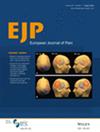A Cross-Sectional Analysis of Traumatic Experiences, Post-Traumatic Stress Disorder Symptoms and Chronic Pain in Northern Ireland
Abstract
Background
Chronic pain and post-traumatic stress disorder (PTSD) are frequently comorbid and are associated with more significant pain-related disruption than chronic pain alone. It is not clear if these disruptions are due to traumatic experience or specific symptoms related to PTSD.
Methods
This issue was evaluated in a large sample (N = 1367) of individuals with chronic pain presenting for treatment at an interdisciplinary pain rehabilitation service. As a secondary objective, the comorbidity of chronic pain and PTSD in Northern Ireland (NI) was also examined given high regional prevalence rates. Participants completed a PTSD screening measure, along with measures of pain interference, social functioning, pain anxiety, pain self-efficacy, pain intensity and depression.
Results
Screening indicated that 46.4% had never experienced a traumatic event, 22.5% had experienced a traumatic event but screened negative for PTSD and 31.1% screened positive for PTSD. Following identification of covariates, a Multivariate Analysis of Covariance examined differences in dependent measures by PTSD category, which yielded a similar pattern of results across measures. The group that screened positive for PTSD reported worse functioning and more disruptions in comparison to the other two PTSD groups, with the latter groups not differing on any measure.
Conclusions
These analyses indicate that poorer functioning was not associated with trauma exposure alone; rather, it was experienced in association with PTSD symptoms. Further, comorbidity rates of PTSD and chronic pain in this NI dwelling sample were at the high end of the range in relation to previous work and exceeded past year regional prevalence estimates.
Significance
PTSD assessment in those with chronic pain may be best served by evaluating the impact of these experiences on function, rather than focusing on the traumatic experiences in isolation. Further, there is scope to develop integrated chronic pain and PTSD treatments.


 求助内容:
求助内容: 应助结果提醒方式:
应助结果提醒方式:


